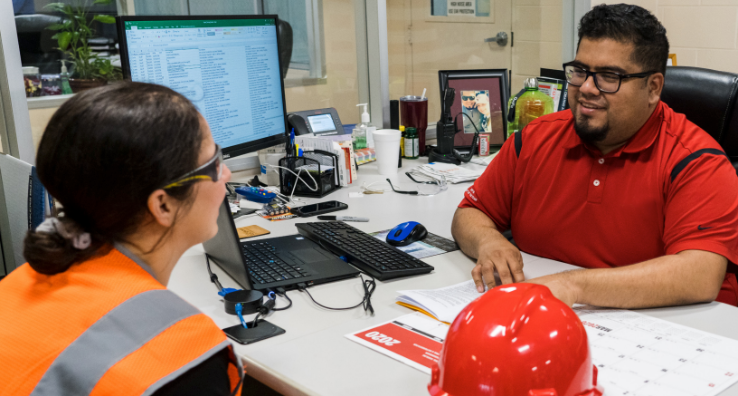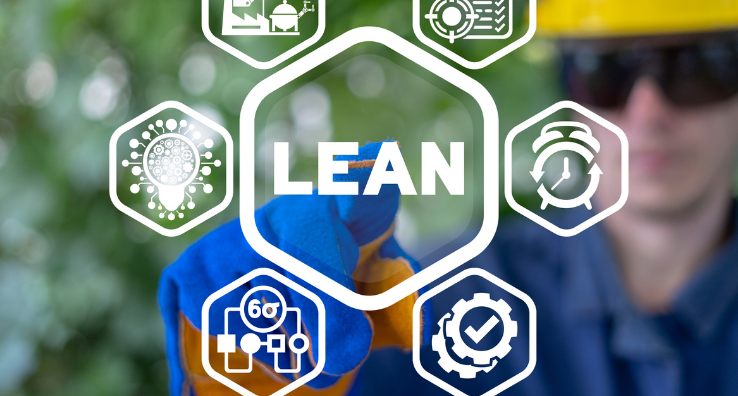6 Steps for Building an Onboarding Program that Prevents New-Hire Injuries

Manufacturers spend massive amounts of time, energy and money training employees to be safe on the job only to see many of them walk out the door a few weeks or months later. Each new cycle of employees brings a new level of risks for manufacturers across nearly every industry.
Recently, Travelers insurance reviewed more than 1.5 million workers compensation claims from 2015 through 2019 and discovered that 35% of the injuries were tied to first-year employees. Their injuries resulted in more than 6 million missed workdays. Most of the injuries were tied to overexertion 27%, slips, trips and falls 22%, and being struck by an object 14%.
The findings of their report underscore the importance of effective safety training as part of the employee onboarding process. Safety training has to start on day one. If you’re building an employee onboarding program or looking for ways to make it more effective, here are six steps to incorporate for effective safety training.
1. Create a Plan for New Hires Before Day 1
The saying “those who fail to plan, plan to fail” applies here. Creating a robust plan for onboarding new hires will help you to successfully integrate them into your company culture and accelerate your onboarding process.
A survey by Aberdeen showed that 83% of the highest performing organizations begin onboarding prior to the new hire’s first day on the job. One way to do this is to allow your new hires access to an online onboarding tool after you have received their signed job offer. They can begin to learn first day information, receive welcome messages from their manager, and discover details about their department and job responsibility.
With this tool, you should be able to organize and track tasks and courses that need to be completed. In addition, you can answer questions before their first day, such as where they should go on day one, who to ask for upon arrival, and what to wear.
It’s also an opportunity to introduce your safety culture, starting with an overview that stresses the importance your company places on their safety. Introduce a few guidelines and provide a way for employees to ask questions or report safety issues. Let them know that no one will be penalized for reporting safety concerns.
2. Standardize On-the-Job Training across All Shifts and Departments
According to go2HR, 40% of employees who receive poor or no on-the job training leave within their first year of employment. Have you ever noticed at your facility that some departments or shifts are better at training their new hires than others? This can occur when manufacturers solely rely on informal training processes like the buddy system to train their new hires. By utilizing process-driven tools that ensure each employee receives all the training they need, organizations can prevent bad practices from spreading throughout the facility and prevent future injuries.
3. Set Aside Time for Frequent Observations and Feedback Sessions
It’s important for supervisors to maintain regular check-ins and observations with new employees to ensure they are comfortable, happy, and engaged. Supervisors should provide thoughtful feedback on their new hire’s early contributions during onboarding and seek out their thoughts on improving safety. This also strengthens the relationship between the employee and the organization that they work for.
4. Automate the Onboarding Process
Automating the paperwork and normal onboarding practices will increase productivity for everyone. This will allow your training team to focus more on creating engaging and efficient content for onboarding and safety training. Going paperless will help to streamline your onboarding process and increase efficiency, while providing much more visibility to each new hires’ onboarding progress and understanding of safety guidelines.
5. Consistently Ask for Feedback
Your frontline workers want to feel like they can be honest and heard at their company. There is no better way to discover ways to improve your onboarding process and safety discussions than by asking new hires about their experiences at other companies. This will help you identify, address, and resolve any red flags before they become a bigger issue. Take time to demonstrate how new employees can quickly report safety issues.
6. Cross Train Early and Often
Cross training offers a path for growth and provides a broad perspective of how safety fits into the overall operations picture. In the process, you’ll convey their importance and relevance to the program and encourage your employees to contribute in ways that will make you and them more effective.
Employees who feel they have no future with their company are more likely to leave after a few months on the job. By training your workers to perform different tasks and take on greater responsibility, you demonstrate confidence and a willingness to invest in their future with the company. Employees are more likely to stick around if they believe they’ll receive training that can help advance their careers.
Over the last two decades, Intertek Alchemy has worked with companies that understand the value of training as a means to retain and attract employees to their manufacturing facilities.
Below are a few resources to consider as you build or update your onboarding program. If you need help, we have consultants who can assess your needs and provide recommendations. Contact us and let’s talk about how to build an onboarding program that retains your employees and helps keep them safe.
Related Resources:
Intertek Alchemy Onboarding Training Courses
Best Practices for New Hire Orientation, Onboarding, & Training
Related Blogs:
How to Build & Sustain an Effective Workforce with Cross-training
Retaining Employees from Day One with Effective Training
Client Spotlight: Ajinomoto Puts People First with Cross-Training Strategy





